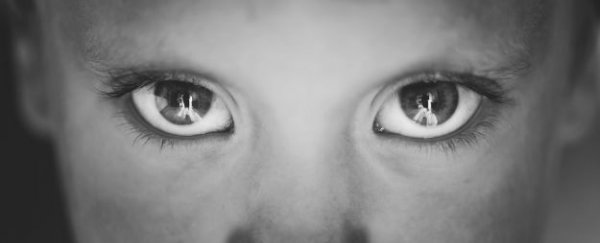By decoding the brain activity of infants that were subconsciously exposed to various expressions, an international team of psychologists has demonstrated how humans learn to communicate using their eyes alone.
When it comes to expressing our emotions - intentionally or not - there's nothing quite like our eyes. Whether we're experiencing feelings of joy or fear, or a deep sadness or boredom that we can't help but give away, our eyes are the windows to our souls, and as humans, there's not a whole lot we can do to change that.
But let's not lose perspective here, as Alison Gopnik points out at The Washington Post, eyes are really just slightly squishy globes of jelly-goo surrounded in special nerves, fibres and lens cells. They're incredibly complex organs, yes, but how can they express so much without us even trying?
New research by psychologists Sarah Jessen from the Max Planck Institute in Germany and Tobias Grossmann of the University of Virginia in the US has discovered that not only do we learn to read and respond to what we see in each other's eyes at an extremely young age, but we do so subconsciously in order to survive.
Humans are the only primates with a large, highly visible sclera - the white part of the eye - which makes them easier to track and read than the eyes of many other animals. Imagine trying to read the emotions of a hamster without any physical cues other than what's going on in those black, beady pools. Those adorable little enigmas.
But most people, even when they're very young, tune in and focus on another person's eyes when they're trying to connect and read their emotions and intent. Grossmann and Jessen decided to test this ability in several very young babies to see just how early on in a human's life meaning can be derived by reading another person's eyes.
Working with seven-month-old babies, Grossmann and Jessen exposed their young subjects to several schematic pictures of human eyes showing either fearful expressions - wide-eyed plenty of visible sclera - or neutral, dead-eyed expressions. The eyes would either be looking front on at their infant audience, or to the side. The infants were also shown images of eyes where the colours had been reversed, so the eye whites would be black, and the pupils white.
Each image in the series was shown to the infants for just 50 milliseconds, which is enough for them to subconsciously register what they saw, but not long enough for them to really think about it. And all of this was happening while the infant subjects were wearing EEG caps, which are equipped with an array of sensors that detect and record brain signals as they occur.
"The babies' brain-waves were different when they looked at the fearful eyes and the neutral ones, and when they saw the eyes look right at them or off to one side," reports Gopnik at The Washington Post. "The differences were particularly clear in the frontal parts of the brain. Those brain areas control attention and are connected to the brain areas that detect fear."
But when the babies were shown the reverse-colour images, their brain scans revealed that they did not differentiate between the fearful and neutral expressions. This suggests that the position and area of the sclera is crucial for how we interpret meaning in each other's eyes, especially when we're young.
"Their brains clearly responded to social cues conveyed through the eyes, indicating that even without conscious awareness, human infants are able to detect subtle social cues," said Grossmann in a press release.
"This demonstrates that, like adults, infants are sensitive to eye expressions of fear and direction of focus, and that these responses operate without conscious awareness," he adds. "The existence of such brain mechanisms in infants likely provides a vital foundation for the development of social interactive skills in humans."
The results were published in Proceedings of the National Academy of Science.
